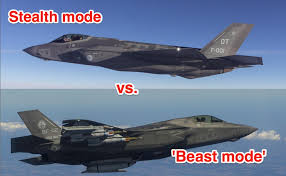My Article published on “The EurasianTimes” website on 17 Jun 25.
On June 13, 2025, Israel launched Operation Rising Lion, a bold and sophisticated military campaign targeting Iran’s nuclear facilities, missile bases, and key military personnel. The operation, which struck sites like Natanz, Fordow, and Arak, and killed high-ranking figures such as IRGC Commander-in-Chief Hossein Salami, was a direct application of the Begin Doctrine—Israel’s strategic policy of pre-emptively denying adversaries the ability to acquire nuclear weapons. Named after Prime Minister Menachem Begin, who authorised the 1981 strike on Iraq’s Osirak reactor, the doctrine has shaped Israel’s approach to regional threats for over four decades. This article examines Operation Rising Lion as a continuation of the Begin Doctrine, tracing its evolution from Osirak to Natanz, analysing its strategic execution, and exploring its implications for Israel’s security and regional stability.
The Begin Doctrine
The Begin Doctrine is a cornerstone of Israeli strategic policy, centered on the pre-emptive prevention of adversaries, particularly in the Middle East, from acquiring nuclear weapons that could pose an existential threat to Israel. Named after former Israeli Prime Minister Menachem Begin, the doctrine emerged following Israel’s airstrike on Iraq’s Osirak nuclear reactor on June 7, 1981, known as Operation Opera. It reflects Israel’s commitment to ensuring its survival in a region surrounded by hostile states, some of which have historically pursued nuclear capabilities.
Key Principles of the Begin Doctrine include the following:-
-
- Pre-emptive Action. Israel reserves the right to use military force to prevent any hostile state or non-state actor from developing nuclear weapons.
- Existential Threat Mitigation. The doctrine prioritises neutralising capabilities that could enable adversaries to produce weapons of mass destruction (WMDs), notably nuclear weapons.
-
- Unilateral Action. Israel will act independently if necessary, even without international approval or coordination, to safeguard its security.
-
- Deterrence and Regional Dominance. By demonstrating its willingness and ability to strike pre-emptively, Israel reinforces its military superiority and deters adversaries. Historical Context and Application.
Historical Precedents: Osirak and Orchard
Operation Opera (1981). On June 7, 1981, eight Israeli F-16s, escorted by F-15s, flew 1,100 kilometers to destroy Iraq’s Osirak reactor, a French-built facility suspected of producing plutonium for nuclear weapons. The strike was meticulously planned, relying on intelligence from Mossad and defectors. Despite international outrage, including a UN Security Council resolution condemning Israel, the operation delayed Iraq’s nuclear program significantly. It established the Begin Doctrine as a proactive strategy, emphasising Israel’s willingness to act alone to ensure its survival.
Operation Orchard (2007). On September 6, 2007, Israel struck Syria’s Al-Kibar nuclear reactor in Deir ez-Zor, believed to be a North Korean-designed plutonium facility. The operation, kept secret for months, involved precision airstrikes by F-16s and F-15s, supported by cyberwarfare and Mossad intelligence. Unlike Osirak, Orchard faced minimal international backlash, partly due to Syria’s secrecy and the operation’s surgical nature. It reinforced the Begin Doctrine’s adaptability, incorporating advanced technology and covert tactics to neutralise emerging threats.
Both operations demonstrated Israel’s ability to combine intelligence, air superiority, and strategic surprise, setting the stage for Operation Rising Lion’s complexity.
Operation Rising Lion: A Modern Application
Launched on June 13, 2025, Operation Rising Lion targeted Iran’s nuclear and military infrastructure, reflecting the Begin Doctrine’s evolution in scale, technology, and geopolitical context. Iran’s nuclear program, by 2025, posed an unprecedented challenge, with the International Atomic Energy Agency (IAEA) reporting enough enriched uranium for up to 15 nuclear bombs. Prime Minister Benjamin Netanyahu framed the operation as a “12th-hour” necessity to prevent a “nuclear holocaust,” echoing Begin’s rhetoric from 1981.
Strategic Execution. Operation Rising Lion was a multi-domain assault, integrating air, cyber, and covert operations. Over 200 Israeli aircraft, including F-35s, struck key nuclear sites, the Natanz Enrichment Complex, the Fordow Fuel Enrichment Plant, the Arak Heavy Water Facility and the Isfahan Uranium Conversion Facility. Missile bases like Asfajaabad, IRGC command centers, and air defence systems were hit. Mossad-activated drones and smuggled munitions neutralised launchers and radars, ensuring air superiority. The operation killed key figures, including IRGC leaders Hossein Salami, Mohammad Bagheri, and Amir Ali Hajizadeh, and nuclear scientists like Fereydoon Abbasi and Mohammad Mehdi Tehranchi, crippling Iran’s command and expertise. Mossad’s covert operations, including a secret drone base near Tehran and disinformation about diplomatic rifts, misled Iran’s leadership into underestimating the attack.
Scale and Impact. Operation Rising Lion was unprecedented in scope, targeting over 100 sites with 330 munitions. Iran reported 78–128 deaths, including 20 children, and over 320 injuries, particularly in Tehran’s residential areas, sparking international criticism. The IAEA confirmed no radiation leaks, indicating precise strikes. The operation delayed Iran’s nuclear program, damaged its military infrastructure, and disrupted its chain of command, reinforcing Israel’s regional dominance.
Iran’s Response: Operation True Promise III. Iran’s Supreme Leader Ayatollah Ali Khamenei vowed “severe punishment,” describing Israel’s actions as a “doomed aggression based on a grave miscalculation.” Iran retaliated with Operation True Promise III (Persian: Va’de-ye Sādeq III), which began on the evening of June 13, 2025, approximately 18 hours after Israel’s initial strikes. The Islamic Revolutionary Guard Corps (IRGC) led the operation, supported by Iran’s armed forces and possibly proxy groups like Hezbollah, the Houthis, and the Islamic Resistance in Iraq. Iran fired “dozens” to “hundreds” of ballistic missiles and drones, targeting Israeli military centres, airbases, and strategic sites, including the Kirya military headquarters in Tel Aviv. Specific targets included Nevatim, Hatzerim, and Tel Nof airbases, which house advanced Israeli fighter jets like F-35s and F-15s. The operation involved waves of attacks, with ballistic missiles and kamikaze drones aimed at overwhelming Israel’s multilayered air defences, including the Iron Dome and Arrow missile defence systems. While Israel’s Iron Dome and Arrow systems, aided by U.S., British, and French forces, intercepted most projectiles, some strikes caused damage in Tel Aviv, injuring 21–95 people. Iran’s Supreme Leader, Ayatollah Ali Khamenei, called the strikes a “crushing response”.
Analytical Perspectives
Continuity and Evolution of the Begin Doctrine. Operation Rising Lion reflects the Begin Doctrine’s continuity and evolution. Like Osirak and Orchard, Rising Lion was a unilateral, preemptive strike to deny an adversary nuclear capability. Israel acted without U.S. involvement, prioritising national security over international approval, and justified the operation as existential. The operation’s scale—over 200 aircraft and 100 targets—dwarfs previous strikes. It integrated advanced technologies (AI-assisted targeting, drones, cyberwarfare) and Mossad’s covert infrastructure, showcasing Israel’s technological edge. Unlike Osirak’s single-target focus or Orchard’s secrecy, Rising Lion was a broad assault on nuclear, military, and leadership targets, reflecting the complexity of Iran’s threat.
Strategic and Ethical Challenges. The Begin Doctrine’s application in Operation Rising Lion raises significant issues.
-
- Strategic Success. The operation delayed Iran’s nuclear program, possibly by years, and weakened its military leadership and missile capabilities. It reinforced Israel’s deterrence, signalling to adversaries like Hezbollah and the Houthis that escalation would be costly.
-
- Escalation Risks. Though limited, Iran’s Operation True Promise III underscores the potential for a broader conflict. The Houthis’ missile strike on Hebron and possible proxy involvement from Iraq and Syria highlight the regional ripple effects.
-
- Ethical Concerns. Civilian casualties, including 20 children in Tehran, drew condemnation from the UN, Saudi Arabia, and Russia. Critics argue the doctrine’s preemptive nature risks disproportionate harm, complicating Israel’s international standing.
-
- Limitations. Deeply buried facilities like Fordow remain resistant to conventional strikes, suggesting the doctrine’s reliance on airpower may need adaptation for future threats.
Geopolitical Impact. Operation Rising Lion has transformed the Middle East’s strategic landscape. By eliminating key Iranian leaders and damaging critical infrastructure, Israel has significantly weakened Iran’s regional influence, though its proxy groups, such as Hezbollah and the Houthis, remain active. Global oil prices have surged 8% amid fears of supply disruptions, sending ripples through international markets. The United States backed Israel’s defensive measures but called for restraint, while Russia offered to mediate and Saudi Arabia adopted a cautious approach, highlighting the region’s complex dynamics. The breakdown of scheduled U.S.-Iran nuclear talks in Oman underscores the diplomatic fallout of Israel’s Begin Doctrine.
Israel’s Strategic Blind Spot: Pakistan’s Nuclear Program. Israel’s Begin Doctrine prioritises pre-emptive strikes against adversaries developing nuclear weapons, yet Pakistan’s nuclear program, successful by 1998, never prompted Israeli action. This stems from geopolitical and strategic factors. Unlike Iraq, Syria, or Iran, Pakistan lies outside Israel’s immediate Middle Eastern sphere of influence, reducing its perceived threat. Pakistan’s nuclear ambitions were primarily driven by rivalry with India, not hostility toward Israel. Diplomatic relations, though limited, existed indirectly, and Pakistan’s leadership, including Zulfikar Ali Bhutto and Pervez Musharraf, avoided framing Israel as a primary enemy. Israel’s intelligence, via Mossad, likely assessed Pakistan’s program as India-focused, not aimed at Tel Aviv. Additionally, U.S. influence, a mutual ally, restrained escalation, as Pakistan’s nuclear development was tacitly accepted to counter India. Thus, Israel conserved resources for proximate threats like Iran, aligning with the Begin Doctrine’s focus on existential risks.
Conclusion
From Osirak to Natanz, the Begin Doctrine has guided Israel’s strategy to prevent nuclear proliferation among its adversaries. With its unprecedented scale and technological sophistication, Operation Rising Lion represents the doctrine’s most ambitious application yet. By targeting Iran’s nuclear facilities, missile bases, and leadership, Israel reaffirmed its commitment to existential security, even at the cost of regional escalation and international criticism. However, the operation’s success in delaying Iran’s nuclear ambitions comes with challenges: fortified sites like Fordow, retaliatory risks, and ethical questions about civilian casualties. As of this date, the Israel-Iran conflict remains volatile, with the Begin Doctrine both a shield for Israel’s survival and a catalyst for regional tensions. The doctrine’s future will depend on Israel’s ability to adapt its pre-emptive strategy to an increasingly complex geopolitical landscape.
Please Add Value to the write-up with your views on the subject.
Link to the article on the website:-
For regular updates, please register your email here:-
References and credits
To all the online sites and channels.
Pics Courtesy: Internet
Disclaimer:
Information and data included in the blog are for educational & non-commercial purposes only and have been carefully adapted, excerpted, or edited from reliable and accurate sources. All copyrighted material belongs to respective owners and is provided only for wider dissemination.
References:-
- International Atomic Energy Agency. (2025, June 12). Report on Iran’s Nuclear Program Compliance. Vienna: IAEA.
- United Nations. (2025, June 13). Statement by Secretary-General António Guterres on Israeli Airstrikes in Iran. New York: United Nations Press Office.
- Al Jazeera. (2025, June 14). “Iran Vows ‘Harsh Response’ After Israeli Strikes on Nuclear Sites.” Al Jazeera English.
- BBC News. (2025, June 13). “Israel Launches Operation Rising Lion: What We Know About the Strikes on Iran.” BBC World Service.
- Reuters. (2025, June 15). “Oil Prices Surge as Israel-Iran Tensions Escalate After Operation Rising Lion.” Reuters.
- The Jerusalem Post. (2025, June 13). “Netanyahu: Operation Rising Lion Prevented Nuclear Holocaust.” The Jerusalem Post.
- The New York Times. (2025, June 14). “Mossad’s Covert Role in Israel’s Strike on Iran Revealed.” The New York Times.
- Center for Strategic and International Studies. (2025, June 14). Operation Rising Lion: Assessing Israel’s Strike on Iran’s Nuclear Program. Washington, DC: CSIS.
- Institute for National Security Studies. (2025, June 15). The Geopolitical Fallout of Operation Rising Lion. Tel Aviv: INSS.
- Israel Defence Forces. (2025, June 13). Official Statement on Operation Rising Lion. Jerusalem: IDF Press Office.
- U.S. Department of State. (2025, June 13). Press Briefing by Secretary of State Marco Rubio on Israel-Iran Conflict. Washington, DC: U.S. Department of State.
- Bergman, Ronen. (2018). Rise and Kill First: The Secret History of Israel’s Targeted Assassinations. New York: Random House.
- Pollack, Kenneth M. (2021). The Persian Puzzle: Iran’s Strategic Challenge. Washington, DC: Brookings Institution Press.



